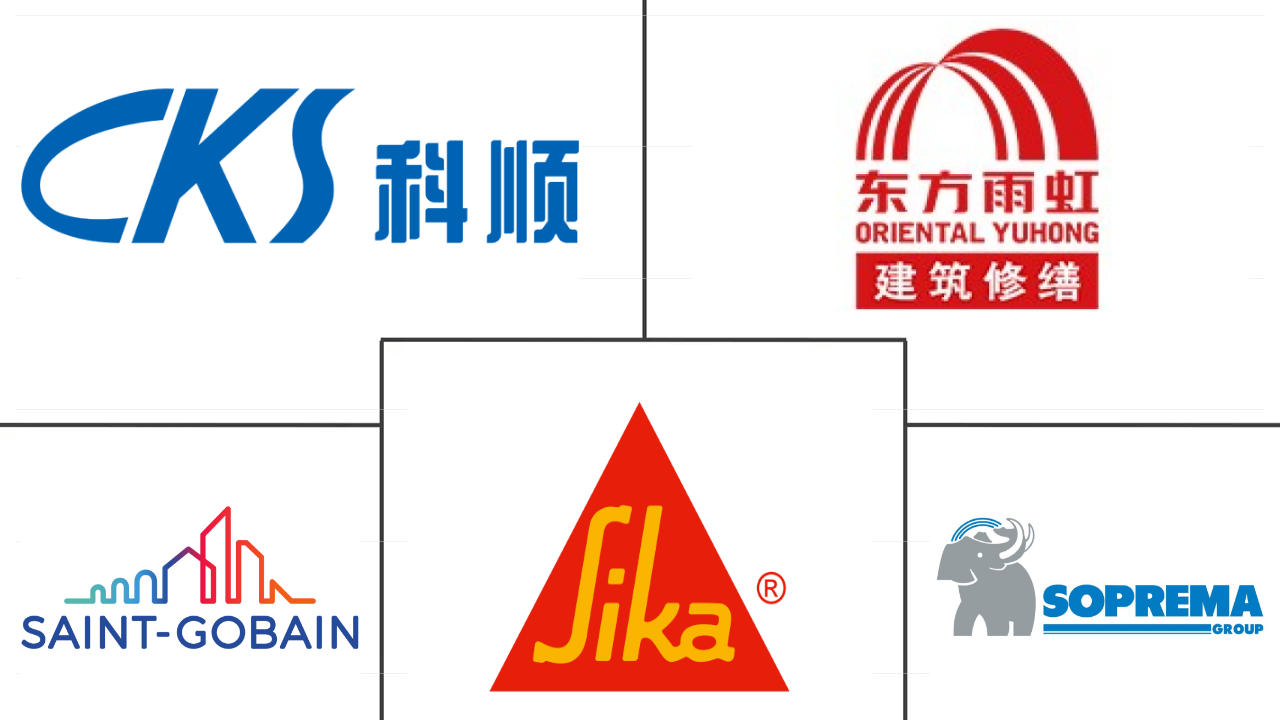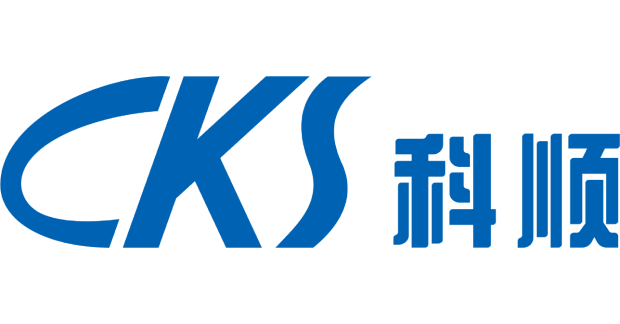Market Size of asia-pacific waterproofing solutions Industry
| Icons | Lable | Value |
|---|---|---|
|
|
Study Period | 2018 - 2030 |
|
|
Market Size (2024) | USD 13.91 Billion |
|
|
Market Size (2030) | USD 21.38 Billion |
|
|
Largest Share by End Use Sector | Industrial and Institutional |
|
|
CAGR (2024 - 2030) | 7.42 % |
|
|
Largest Share by Country | China |
|
|
Market Concentration | Low |
Major Players |
||

|
||
|
*Disclaimer: Major Players sorted in no particular order |
Asia-Pacific Waterproofing Solutions Market Analysis
The Asia-Pacific Waterproofing Solutions Market size is estimated at 13.91 billion USD in 2024, and is expected to reach 21.38 billion USD by 2030, growing at a CAGR of 7.42% during the forecast period (2024-2030).
13.91 Billion
Market Size in 2024 (USD)
21.38 Billion
Market Size in 2030 (USD)
5.89 %
CAGR (2018-2023)
7.42 %
CAGR (2024-2030)
Largest Market by Sub Product
77.84 %
value share, Membranes, 2023
The segment holds the largest share due to its widespread use in commercial and industrial constructions for various applications due to its flexible, sturdy, elastic, and tear-resistant properties.
Largest Market by End Use Sector
32.71 %
value share, Industrial and Institutional, 2023
Due to the growing consumption of waterproofing solutions for applications such as roofing, building decks, basements, etc., the food, oil and gas, and chemical industries occupied the largest market share.
Largest Market by Country
66.95 %
value share, China, 2023
The development of provinces in China, followed by the construction of huge residential complexes, increased the demand for waterproofing solutions, making China the region's largest consumer.
Fastest Market by Country
7.65 %
Projected CAGR, China, 2024-2030
With rising infrastructure spending in China, which is the highest among other countries in Asia-Pacific, and rapid housing construction, the country is expected to be the fastest-growing in the region.
Leading Company
10.82 %
market share, Keshun Waterproof Technology Co., ltd., ltd.

The company has dominated the market with a wide range of waterproofing products such as waterproof coating, bitumen membranes, and others.
Growing demand for housing units is likely to make the residential end-use sector the fastest growing in Asia-Pacific
- In 2022, the Asia-Pacific region witnessed a 4.77% growth in the consumption of waterproofing solutions, driven by rising demand from the industrial, institutional, and residential construction sectors. By 2023, the region is projected to capture approximately 53.32% of the global waterproofing solutions market.
- The industrial and institutional sector dominates the region's waterproofing solutions consumption, accounting for 32.45% in 2022. This sector's new floor area is set to rise by 1.16 billion square feet by 2030, a significant increase from 2023. This surge is attributed to heightened investments in industrial, education, and healthcare construction, bolstered by urbanization and industrialization trends. Consequently, the sector's demand for waterproofing solutions is projected to rise by USD 2.5 billion by 2030, compared to 2023.
- The residential sector in the region is poised to witness the highest growth in waterproofing solutions consumption, with a CAGR of 8.43% during the forecast period. The region's urbanization, coupled with economic stimuli from government initiatives and both foreign and domestic investments, is driving the demand for housing. By 2030, it is projected that over 40% of India's population will reside in urban areas, necessitating around 25 million additional affordable housing units. Consequently, the region's waterproofing solutions consumption for the residential sector is anticipated to surge from USD 3.2 billion in 2023 to USD 5.7 billion in 2030.
High demand is forecasted for waterproofing solutions in China, followed by the revival of residential construction projects
- Waterproofing solutions include membranes and chemicals that prevent water from penetrating or damaging a structure when applied to roofs, walls, foundations, basements, bathrooms, and other areas exposed to moisture or water. In 2022, the Asia-Pacific waterproofing solutions market grew by 4.77% in value compared to 2021, with countries like Australia and Thailand having the highest growth of 7.40% and 6.84%, respectively. Furthermore, in 2023, the market was projected to grow by 6.11% in value compared to 2022.
- China's waterproofing solutions market accounted for the largest market share of 66% by value in 2022. Among all end-use sectors in the country, industrial and residential construction significantly dominated the waterproofing solutions market. In 2022, industrial construction occupied USD 2.8 billion of the gross market share for waterproofing solutions and was likely to grow further in 2023 by 7.97% in value compared to the previous year. Moreover, the Chinese waterproofing solutions market was anticipated to grow by 6.85% in value from 2022 to 2023.
- The Chinese waterproofing solutions market is estimated to register the fastest CAGR of 7.72% in value during the forecast period. The country is projected to witness an increase of about 2.35 billion sq. ft in the new floor area for residential construction by 2030 compared to 2022. This can be attributed to the lowering of mortgage borrowing rates, down-payment requirements, and relaxed restrictions on home purchases. As a result, the Chinese waterproofing solutions market for residential construction is expected to grow at the fastest CAGR of 8.58% in value during the forecast period.
Asia-Pacific Waterproofing Solutions Industry Segmentation
Commercial, Industrial and Institutional, Infrastructure, Residential are covered as segments by End Use Sector. Chemicals, Membranes are covered as segments by Sub Product. Australia, China, India, Indonesia, Japan, Malaysia, South Korea, Thailand, Vietnam are covered as segments by Country.
- In 2022, the Asia-Pacific region witnessed a 4.77% growth in the consumption of waterproofing solutions, driven by rising demand from the industrial, institutional, and residential construction sectors. By 2023, the region is projected to capture approximately 53.32% of the global waterproofing solutions market.
- The industrial and institutional sector dominates the region's waterproofing solutions consumption, accounting for 32.45% in 2022. This sector's new floor area is set to rise by 1.16 billion square feet by 2030, a significant increase from 2023. This surge is attributed to heightened investments in industrial, education, and healthcare construction, bolstered by urbanization and industrialization trends. Consequently, the sector's demand for waterproofing solutions is projected to rise by USD 2.5 billion by 2030, compared to 2023.
- The residential sector in the region is poised to witness the highest growth in waterproofing solutions consumption, with a CAGR of 8.43% during the forecast period. The region's urbanization, coupled with economic stimuli from government initiatives and both foreign and domestic investments, is driving the demand for housing. By 2030, it is projected that over 40% of India's population will reside in urban areas, necessitating around 25 million additional affordable housing units. Consequently, the region's waterproofing solutions consumption for the residential sector is anticipated to surge from USD 3.2 billion in 2023 to USD 5.7 billion in 2030.
| End Use Sector | |
| Commercial | |
| Industrial and Institutional | |
| Infrastructure | |
| Residential |
| Sub Product | ||||||||
| ||||||||
|
| Country | |
| Australia | |
| China | |
| India | |
| Indonesia | |
| Japan | |
| Malaysia | |
| South Korea | |
| Thailand | |
| Vietnam | |
| Rest of Asia-Pacific |
Asia-Pacific Waterproofing Solutions Market Size Summary
The Asia-Pacific waterproofing solutions market is experiencing significant growth, driven by increasing demand from various construction sectors, including industrial, institutional, and residential. The region is poised to capture a substantial share of the global market, with urbanization and industrialization trends further fueling this demand. The industrial and institutional sectors are currently the dominant consumers of waterproofing solutions, with substantial investments in construction projects. Meanwhile, the residential sector is expected to witness the highest growth rate, propelled by government initiatives and investments aimed at addressing the housing needs of rapidly urbanizing populations. This growth is particularly evident in countries like China and India, where urbanization is leading to a surge in demand for affordable housing units.
The market is characterized by a diverse range of solutions, including membranes and chemicals designed to protect structures from water damage. The Asia-Pacific region has shown resilience and recovery from past setbacks, such as the decline in commercial construction due to the COVID-19 pandemic. The region's commercial sector is now rebounding, driven by foreign direct investment and the demand for new retail and office spaces. The market is fragmented, with key players like Keshun Waterproof Technology Co., Ltd., Oriental Yuhong, Saint-Gobain, Sika AG, and Soprema leading the industry. Strategic collaborations and acquisitions among these companies are expected to enhance their product offerings and market presence, further contributing to the market's growth trajectory.
Asia-Pacific Waterproofing Solutions Market Size - Table of Contents
-
1. MARKET SEGMENTATION (includes market size, forecasts up to 2030 and analysis of growth prospects.)
-
1.1 End Use Sector
-
1.1.1 Commercial
-
1.1.2 Industrial and Institutional
-
1.1.3 Infrastructure
-
1.1.4 Residential
-
-
1.2 Sub Product
-
1.2.1 Chemicals
-
1.2.1.1 By Technology
-
1.2.1.1.1 Epoxy-based
-
1.2.1.1.2 Polyurethane-based
-
1.2.1.1.3 Water-based
-
1.2.1.1.4 Other Technologies
-
-
-
1.2.2 Membranes
-
1.2.2.1 By Technology
-
1.2.2.1.1 Cold Liquid Applied
-
1.2.2.1.2 Fully Adhered Sheet
-
1.2.2.1.3 Hot Liquid Applied
-
1.2.2.1.4 Loose Laid Sheet
-
-
-
-
1.3 Country
-
1.3.1 Australia
-
1.3.2 China
-
1.3.3 India
-
1.3.4 Indonesia
-
1.3.5 Japan
-
1.3.6 Malaysia
-
1.3.7 South Korea
-
1.3.8 Thailand
-
1.3.9 Vietnam
-
1.3.10 Rest of Asia-Pacific
-
-
Asia-Pacific Waterproofing Solutions Market Size FAQs
How big is the Asia-Pacific Waterproofing Solutions Market?
The Asia-Pacific Waterproofing Solutions Market size is expected to reach USD 13.91 billion in 2024 and grow at a CAGR of 7.42% to reach USD 21.38 billion by 2030.
What is the current Asia-Pacific Waterproofing Solutions Market size?
In 2024, the Asia-Pacific Waterproofing Solutions Market size is expected to reach USD 13.91 billion.

